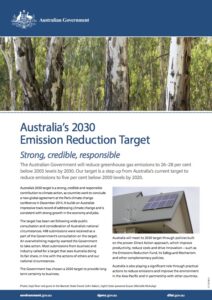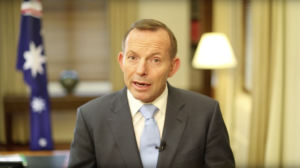Aussie HFC phase-down is go
- PostedPublished 16 August 2015

AUSTRALIA’S Federal Government has committed to phase-down HFCs like R134a as part of the announcement of its greenhouse gas emission reduction targets for 2030.
The overall target is a 26 to 28 per cent reduction in emissions by 2030 compared with 2005 levels, and Refrigerants Australia estimates that the HFC phase-down component and complimentary measures have the potential to deliver an emission reduction equivalent to up to 80 million tonnes of carbon dioxide.
How the HFC phase-down will take shape remains to be seen and will be covered by revisions to the Ozone Protection and Synthetic Greenhouse Gas Management Act (known as the Ozone Act) that is currently underway, with an interim report expected to be released for consultation next month.
“The refrigeration and air conditioning industry actively supports a phase down which is designed to lower the global warming potential of refrigerants over time: this both guarantees improved environmental outcomes while also giving industry long-term certainty,” said Refrigerants Australia executive director Greg Picker.
“We have successfully managed the transition away from ozone depleting substances and we are working with government to deliver increased environmental and economic benefits to the community by better managing HFCs. We are confident that working together we will deliver.”
In December, Australia will take its emission reduction target to the United Nations Framework Convention on Climate Change (UNFCCC) Conference of the Parties in Paris.
Following promising talks at a Montreal Protocol meeting in Paris in July, it is hoped that a contact group will be formed to begin official negotiations toward a global agreement on phasing down HFCs under the Montreal Protocol at the next Meeting of the Parties, which will be held in Dubai at the beginning of November.
A Government fact sheet about Australia’s emissions reduction target says “Australia will be actively involved with international efforts to progress negotiations to reduce hydrofluorocarbons under the Montreal Protocol”.

In response to criticism that Australia’s 26-28 per cent emissions reduction target does not go far enough, Prime Minister Tony Abbott said the goal means Australia is “not leading … but certainly not lagging,” compared with other developed economies.
The Climate Institute has published a comparison of Australia’s target with the 2005-2030 targets of Canada, the European Union, Germany, Japan, New Zealand, Switzerland, the United Kingdom and the United States puts Australia between Japan (25 per cent) and New Zealand (30 per cent).
According to these figures, Canada has the same target as New Zealand while the European Union is aiming for 34 per cent, Germany 46 per cent, Switzerland 50 per cent, the UK 48 per cent and the US 41 per cent.
In this comparison, US and UK targets were estimated by the Climate Institute based on the US reduction target of 26-28 per cent by 2025 and a a longer-term target of 83 per cent by 2050 that would put the 2030 target at 41 per cent.
Similarly, the UK target of an 80 per cent reduction by 2050 based on 1990 levels would put its 2030 target at 48 per cent according to Climate Institute calculations.
The Australian Government fact sheet also includes South Korea’s four per cent target and developing nation China’s projected 150 per cent increase in emissions based on economic growth projections and assuming China meets the upper bound of its emissions commitment.
Critics have also accused the Government of fudging figures by changing the baseline year from 2000 to 2005, which makes the target easier to compare with the United States and Canada but also sets the baseline in Australis’s second-highest emissions year after 1990.
If the baseline remained at 2000 levels, the target would only represent a reduction of between 19 and 22 per cent according to the Climate Change Authority – which survived axing under the Carbon Tax repeal in a deal made between the Coalition and the Palmer United Party in order to get the repeal over the line.
The Climate Change Authority described the Government’s target as “substantially weaker” than its recommendations.
It says Australia needs to cut emissions by 45-63 per cent by 2030 if it is to meet its commitment to “work towards reducing emissions to levels consistent with limiting global warming to less than 2 degrees Celsius above pre-industrial levels”.
According to ABC News, Opposition environment spokesperson Mark Butler said the Government’s target was not high enough and Green Party environment spokesperson Larissa Waters said Tony Abbott was “trying to artificially inflate his pathetically weak targets”.
But Tony Abbott insisted Australia’s target is “environmentally responsible because it’s more than comparable with what other countries are doing”.
“It’s economically responsible because it doesn’t depend upon a great big new tax on everything, or a massive overbuild of renewable capacity in the next few years.”
- CategoriesIn Latest News


